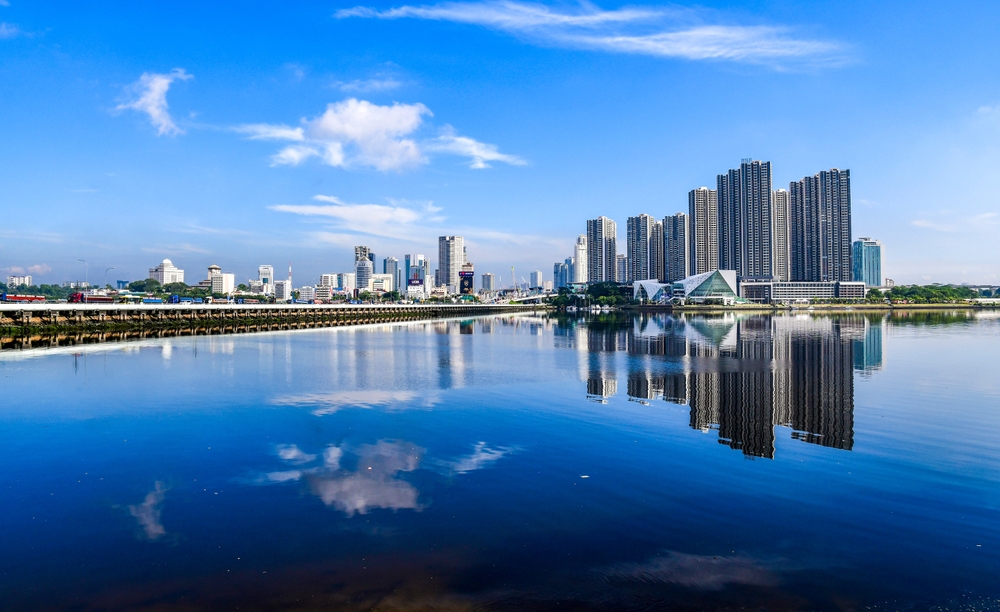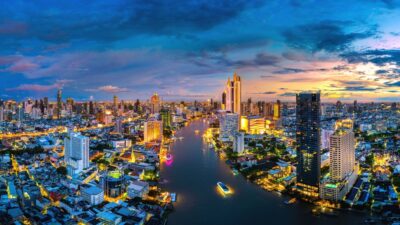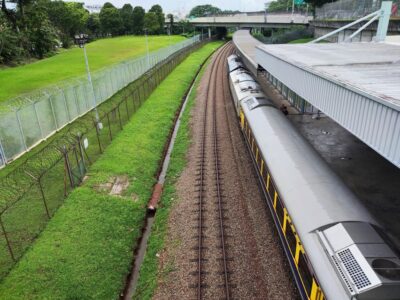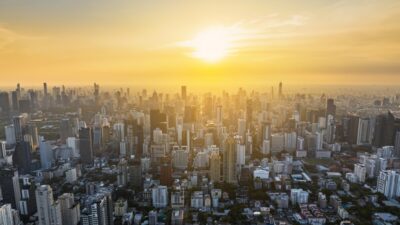Johor Bahru emerges as a key economic partner to Singapore
Once regarded as a poor relation across the causeway, Johor Bahru is cementing its status as an integrated economic partner to Singapore
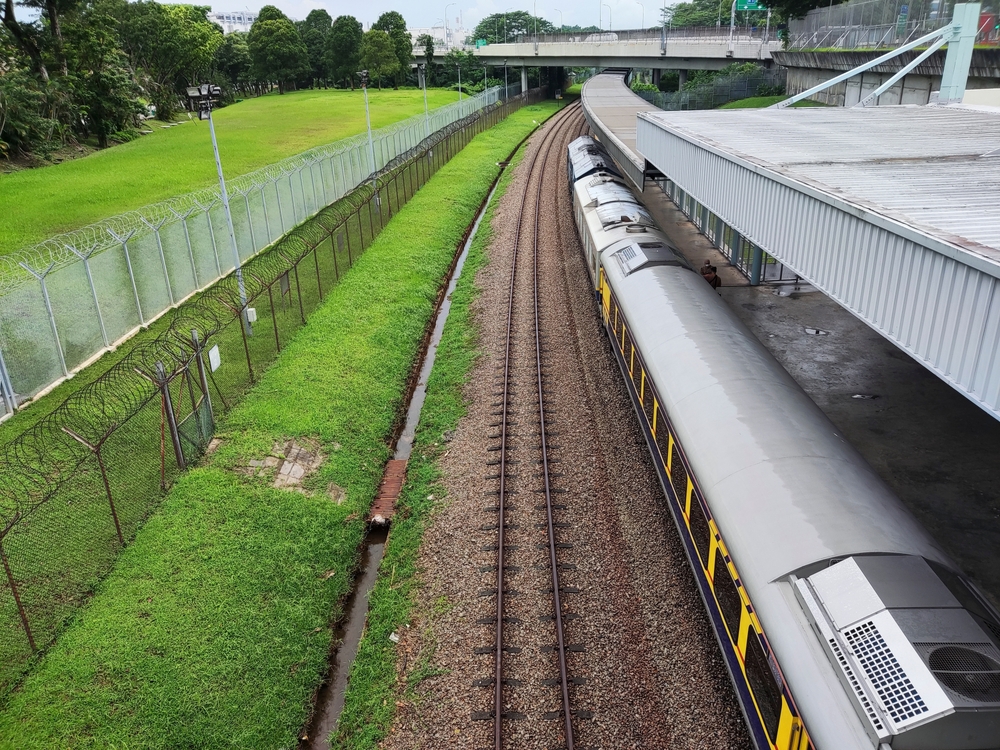
If you were a tourist in Johor Bahru in the mid-1990s, chances are you hurried through, eager to spend as little time as possible in what the Lonely Planet then described as a “dirty, chaotic border town.”
Fast forward a few decades, and the city is unrecognisable. It bristles with luxury apartments, trendy bars and restaurants, and modern public transport. From a place people once fled, it has become a destination drawing homebuyers, tourists, and international businesses, pumping millions of dollars into its future.
Johor’s transformation began in the early 2000s with the launch of Iskandar Malaysia, the country’s largest special economic zone by investment value. But it is in recent years that the city has been supercharged into one of Malaysia’s most dynamic urban centres.
These infrastructure efforts are part of a cohesive strategy to integrate Johor’s economy internally and with our neighbours, driving efficiency and lowering the cost of doing business
One of the biggest drivers is tech. Johor is now one of Southeast Asia’s largest AI hubs and among the fastest growing in the world.
In the first half of 2025, Johor approved 42 data centre projects worth MYR164.45 billion (USD35 billion), bringing the total operational and under-construction sites to 47. Among them is Microsoft, which purchased its fourth plot for MYR119.8 million (USD27 million).
“We are talking about a region that really grew at a pace nowhere else in the world has seen,” says Rangu Salgame, CEO of Princeton Digital Group.
Across the state, giant warehouses hum with rows of servers powering everything from Netflix to AI chatbots. The boom has been fuelled by abundant, affordable land—something Singapore, once a data centre hotspot, now lacks—alongside heavy infrastructure investment aimed at securing Johor’s long-term success.
Projects include the widening of the North–South Expressway, expansion of the Senai–Desaru Expressway linking Johor’s coasts, and the rollout of a new elevated bus-tram system. A long-awaited electric train line connecting Kuala Lumpur and Johor Bahru has been delayed beyond its planned August launch.
Perhaps the most anticipated development is the Johor Bahru–Singapore Rapid Transit System (RTS) link, due to open in January 2027.
“All these infrastructure efforts are not ad hoc; they are part of a cohesive strategy to integrate Johor’s economy internally and with our neighbours, driving efficiency and lowering the cost of doing business,” said Lee Ting Han, chairman of the Johor State Investment, Trade and Consumer Affairs Committee, in August.
“Better highways, ports, rail, and digital infrastructure will ensure that as industries grow, the benefits are wellmanaged and widely shared. This focus on infrastructure is turning Johor into a logistics and commerce nexus, reinforcing that our growth is underpinned by tangible improvements on the ground.”
Johor’s relationship with Singapore has always been central to its growth.
Since the 19th century, the state’s economy has been tied to Singapore’s fortunes—from plantations supplying the British port, to the steady flow of workers and goods after independence. Even in the 1990s, when Johor Bahru was dismissed as a shabby border town, Singaporeans crossed for cheap food, medicines, and petrol. But today, Johor has transcended its reputation as merely a source of cutprice essentials.
A new joint special economic zone has become one of the most attractive developments, fuelling trade and travel between the two countries.
The Johor-Singapore Special Economic Zone (JS-SEZ), officially established this year, spans an area nearly five times larger than Singapore and almost double the size of China’s Shenzhen. It offers tax breaks for industries including AI, computing, and aerospace manufacturing.
“Critical infrastructure improvements underpin the zone’s development,” says Jamie Tan, managing director of JLL Malaysia.
“This 4km rail link, scheduled to operate by December 2026, will be capable of transporting up to 10,000 passengers per hour in each direction, cutting crossborder travel time to just six minutes.”
Singapore, meanwhile, will purchase land parcels from Malaysia to expand the Woodlands Checkpoint. The site, equivalent to a football field, is expected to ease border congestion. Foot traffic at Woodlands rose 22 percent in 2024, with daily visitors increasing to 327,000 from 269,000 the previous year. By 2050, average daily numbers are projected to hit 400,000.
Easier access and new opportunities are spurring heavy property inflows from Singapore.
According to Govinder Singh, executive director of Apac Capital Markets at Colliers Singapore, more than half of real estate investment capital flowing into Johor in the first four months of this year came from cross-border sources. He noted that 51.8 percent of inflows were led by Singapore investors, followed by those from Japan, the US, China, Australia, Canada, Hong Kong, the UK, and Taiwan.
Last year, total real estate investment in Johor reached roughly USD2.1 billion.
Roy Ling, CEO of FollowTrade, an investment platform, tells Property Report that Johor and Singapore’s property markets have long been intertwined.
“For decades, Johor offered space and affordability, while Singapore provided stability and trust. They’re not substitutes, but complements. That balance has shaped the cross-border story for generations.”
On the Woodlands expansion, Ling added: “Singapore’s move to expand the checkpoint into Malaysia is not just about easing congestion—it’s about futureproofing cross-border connectivity. A more efficient gateway will unlock real estate value on both sides of the Causeway, strengthening Woodlands as a growth corridor and boosting Johor’s appeal as an integrated economic partner.”
Singaporean homebuyers are increasingly looking at Johor as a genuine place to live—close to Singapore, yet far more affordable. Housing prices in the city state start at around SGD29,000 (USD21,700) per square metre in central areas and about SGD19,000 outside. By contrast, Johor’s range is MYR4,800 (USD1,136) per sqm for standard condos and MYR10,800 for luxury.
Ling concludes: “As Johor expands its industrial and residential base, Singapore becomes even more valuable as the premium, safe-haven market. We’ll see a division of labour: Johor for scale, Singapore for trust. In the long run, both markets will rise together, with Woodlands as the new gateway to ASEAN.”
This article was originally published on asiarealestatesummit.com. Write to our editors at [email protected].
Recommended
Thailand advances digital finance with blockchain real estate push
Issues over marrying blockchain incentives to a physical asset class is hampering Thailand’s digital finance push
Johor Bahru emerges as a key economic partner to Singapore
Once regarded as a poor relation across the causeway, Johor Bahru is cementing its status as an integrated economic partner to Singapore
Vietnam sets new rules to reward clean energy producers
Vietnam’s government has passed new regulations allowing homeowners and landlords to sell solar power back to the national grid for the first time
Bangkok developers shift focus to safer low-rise and suburban projects
Concerns over Bangkok’s seismic safety in the wake of the recent Myanmar earthquake have prompted a shift toward low-rise developments

